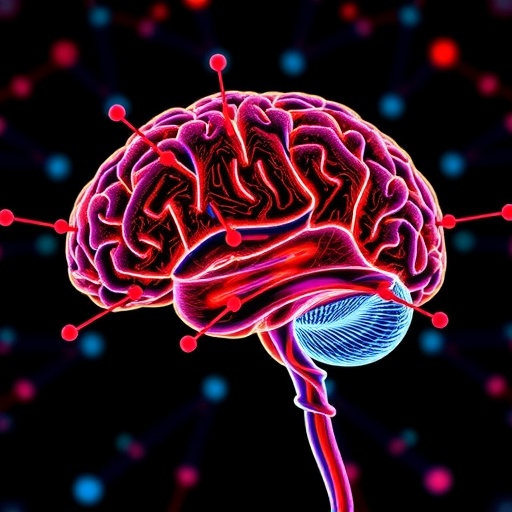In a groundbreaking study that promises to reshape the future of neurodegenerative disease treatment, researchers have uncovered a novel role for hemoglobin within the brain, revealing it as a powerful antioxidant defense system rather than merely an oxygen transporter. This discovery not only challenges long-held assumptions about hemoglobin’s function but also inaugurates a new era of therapeutic strategies targeting oxidative stress–related disorders such as Alzheimer’s, Parkinson’s disease, amyotrophic lateral sclerosis (ALS), and even aging.
Traditionally, hemoglobin has been recognized primarily for its critical role in red blood cells, where it binds and delivers oxygen throughout the body. However, the brain’s cellular landscape, marked by a high metabolic rate and vulnerability to oxidative damage, demands more nuanced defense mechanisms. The extensive accumulation of reactive oxygen species (ROS), particularly hydrogen peroxide (H₂O₂), has been implicated as a major factor driving neuronal degeneration in various brain disorders. Efforts over decades to mitigate ROS damage with conventional antioxidants have largely failed due to poor brain permeability, instability, or unintended harm to healthy cells.
The research, spearheaded by Director C. Justin Lee and his team at the Institute for Basic Science in Daejeon, South Korea, shifted focus towards the brain’s intrinsic defenses. Utilizing advanced imaging techniques alongside molecular and biochemical analyses, the scientists pinpointed the presence of hemoglobin localized in the nucleolus of astrocytes—glial cells pivotal for supporting and nourishing neurons. Intriguingly, within this niche, hemoglobin functions as a “pseudoperoxidase,” catalyzing the decomposition of hydrogen peroxide into benign water molecules. This enzymatic activity positions hemoglobin as a natural scavenger mitigating oxidative damage at the cellular level.
Capitalizing on this insight, the team engineered KDS12025, a small molecule compound designed to amplify hemoglobin’s intrinsic antioxidant function. Critical to its success, KDS12025 possesses the ability to traverse the blood-brain barrier—a notorious obstacle for drug delivery—enabling direct interaction with hemoglobin’s heme moiety inside astrocytes. This interaction dramatically enhances hemoglobin’s capacity to decompose H₂O₂ by nearly 100-fold, while impeccably preserving its essential oxygen transport function. This selective augmentation mitigates oxidative toxicity without perturbing physiological processes, marking a precise pharmacological innovation.
Experimental validation in vitro demonstrated that KDS12025 markedly reduces H₂O₂ accumulation in astrocytes under oxidative stress conditions mimicking neurodegenerative pathology. Subsequent in vivo studies using various mouse models of ALS, Parkinson’s disease, Alzheimer’s, and aging showed profound neuroprotective effects. Oral administration of KDS12025 via drinking water effectively suppressed neuronal apoptosis, attenuated astrocytic reactivity—a hallmark of neuroinflammation—and restored cognitive and motor functions. Notably, ALS model mice exhibited a disease onset delay and lived over four weeks longer than untreated counterparts, signaling a substantial therapeutic benefit.
Beyond classical neurodegeneration, the compound’s efficacy extended to systemic inflammatory conditions as evidenced in rheumatoid arthritis models, where it alleviated joint inflammation and tissue damage. This broader anti-inflammatory potential underscores the versatility of targeting hemoglobin-mediated antioxidant pathways across diverse oxidative stress–related diseases, amplifying the clinical impact of this approach.
The study also illuminated a vicious cycle detrimental to brain health: excessive hydrogen peroxide presence depletes astrocytic hemoglobin, thereby compromising the brain’s own antioxidant defenses and accelerating neuronal degeneration. KDS12025 interrupts this feedback loop by restoring hemoglobin levels and enzymatic activity, which reduces oxidative burden and maintains neuronal integrity. The restoration of this intrinsic defense mechanism distinguishes the approach from conventional exogenous antioxidants and highlights a paradigm shift toward enhancing endogenous protective systems.
From a mechanistic perspective, the dual capacity of hemoglobin to transport oxygen and degrade H₂O₂ within astrocytes represents a sophisticated cellular adaptation to oxidative challenges inherent in high-energy demanding brain tissues. This functionality suggests evolutionarily conserved roles of globin proteins beyond erythrocytes that have remained underappreciated. Further investigation into the distinct roles of α- and β-globin subunits within the brain is anticipated to provide deeper insights into their contributions to redox homeostasis and neuroprotection.
Harnessing hemoglobin as a druggable target signifies a milestone in neuroscience and pharmacology, especially as current antioxidant strategies have failed to translate into effective clinical therapies. The water solubility, blood-brain barrier permeability, and specificity of KDS12025 set new benchmarks for CNS drug design. Future development efforts are focused on refining KDS12025 derivatives for enhanced efficacy and safety profiles suitable for human clinical trials, as well as expanding therapeutic indications to other oxidative stress–driven disorders.
Director Lee emphasizes, “This advancement opens an entirely new therapeutic frontier—boosting the brain’s own hemoglobin-mediated antioxidant defenses offers a sustainable and targeted means to counter oxidative damage, fundamentally altering how we approach neurodegenerative diseases.” The implications extend to combating age-related cognitive decline and autoimmune diseases, heralding a versatile class of interventions.
In conclusion, this pioneering work transforms our understanding of hemoglobin from a familiar oxygen transporter to a precision enzymatic shield against oxidative insults within the brain. By introducing a sophisticated mechanism to potentiate hemoglobin’s pseudoperoxidase activity, the research lays a robust foundation for next-generation therapies aimed at halting or even reversing neurodegeneration. As the global burden of brain diseases escalates, innovations like KDS12025 offer renewed hope for millions affected worldwide.
Subject of Research: Animals
Article Title: Hemoglobin as a pseudoperoxidase and drug target for oxidative stress-related diseases
News Publication Date: 21-Aug-2025
Web References: 10.1038/s41392-025-02366-w
Image Credits: Institute for Basic Science
Keywords: Neurodegenerative diseases, Hemoglobin, Astrocytes, Reactive oxygen species, Antioxidants, Antiinflammatory drugs, Medications, Drug therapy, Cellular neuroscience




